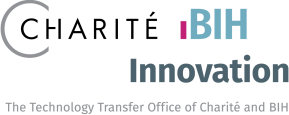Frequently Asked Questions
The following list of questions may help in the understanding of the SPARK process.
Why should academic institutions participate in drug development?
There are several compelling arguments for basic science researchers to be interested in translational work:
- Social obligation: Much of the money to fund basic science research comes from public funds, so it makes sense for researchers to try to help their discoveries improve public health if translational opportunities exist.
- Foster culture of innovation: Academics are risk takers in that they are not afraid to embark on big high-risk research questions if they have potential for a high impact. Industry tends to be more risk averse, as corporate heads have investors to please. Given the escalating costs and timelines associated with drug development, the field needs more innovative people tackling challenges in order to meet medical needs.
- Champion the science: Even promising therapies need champions to promote their development across the “Valley of Death” described by Elias Zerhouni, former director of the National Institutes of Health. “If not you, then who?”
Why do academic researchers want to participate in SPARK?
In surveys of SPARK participants, the most cited benefit of SPARK is access to the expert advisors. Many participants also report that SPARK funding was critical to keep the project moving towards the next value point; highlighting the gap in available funding for experiments in this “Valley of Death”. SPARK can also act as a matchmaker between projects and interested investors. Overall, SPARK’s efforts help reduce the barriers to translational research.
How many advisors does SPARK have?
SPARK Stanford now has over 150 advisors, about 30 who attend any given SPARK session, but they started with only 5 advisors. SPARK Berlin has also started with few advisors and is adding advisors as the program matures.
Does SPARK track licensing terms and patents issued?
Because the technology transfer office (TTO) negotiates all licenses and decides what patents to file, SPARK does not track royalty revenues or patents filed as metrics of our success. SPARK also does not receive any fraction of royalties generated from SPARK programs.
Have researchers’ views on SPARK participation changed over time?
Although the funding may initially have drawn participants to SPARK, the access to education, experience and advice has grown to be the biggest motivations for participation in SPARK.
Where does SPARK funding come from?
Funding sources to support project vary between different SPARK programs around the globe.
SPARK-BIH is supported by the Berlin Institute of Health (BIH) and the Stiftung Charité. As of 2017, SPARK funding is integrated within the BIH Innovations Validation Fund.
The funding program consists of two different tracks and funding is strictly milestone-based.
- Track 1 projects are usually earlier in the development timeline and track 1 funding covers projects with a budget of up to 50k € for one year.
- Track 2 projects are further along the development timeline and must meet strict requirements regarding intellectual property rights and market access strategies. Funding covers projects with a financial need of more than 50k € for up to two years.
What makes SPARK so cost-effective is that it leverages the resources already in place in the community like top-notch facilities, service centers, and researchers.
At what stage does SPARK take projects in?
SPARK has a range of projects in each class, from exciting new targets with some validated biology that need a screening effort to identify a hit compound, to repurposing programs that are poised to enter the clinic. SPARK-BIH also accepts projects for biologics, new chemical entities, diagnostics and medical devices.
Why focus on unmet medical need? Wouldn’t second in class be commercially viable?
SPARK is driven to address unmet medical needs, not to generate money. As such, the potential market earnings for a project do not factor heavily into project selection. Also, we feel the best way to utilize the innovation occurring in academia is to focus on novel approaches to treat disease.
How does SPARK handle collaborations with industry?
SPARK will often speak with contacts at pharma, biotech or Venture Capital (VC) groups to try to match SPARK projects to potential licensees. These discussions are always done as an initial contact without project full disclosure.
Do any big pharma companies help fund SPARK?
No, SPARK does not receive industry funding to support the SPARK program or fund certain teams.
What fraction of SPARK Stanford projects form startups vs. are licensed by existing companies?
Of the 20 projects currently licensed, 9 were to established companies, and the other 11 were to primary investigator (PI) startups.
For new statistics, please visit: sparkmed.stanford.edu
Does SPARK have an investment fund to further incubate its start up companies?
Not at the moment.
How is SPARK-BIH integrated into Charité and BIH?
SPARK-BIH is part of CBI (Charité – BIH – Innovation), the joint technology transfer of Charité and BIH.


